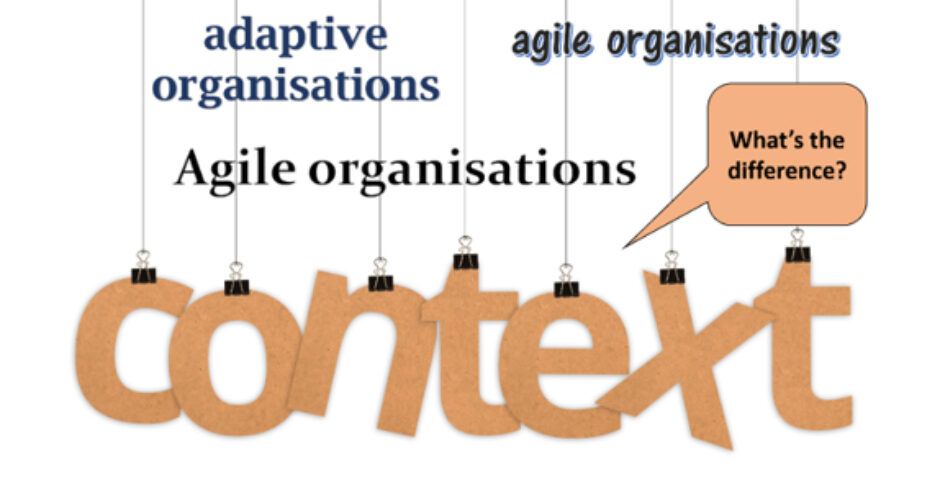Organisations can be agile without implementing Agile delivery and work models, and why agility doesn’t equal adaptiveness.
Adaptiveness is about the overall ability to survive significant unforeseen and foreseen changes to the environment in which the organisation operates.
To quote Gary Hamel adaptiveness is “the capacity to reconfigure its underlying business concept, by dramatically rethinking its core mission, its primary value proposition, its core competencies, the markets or industries in which it competes, its end customer,” amongst other things.
Agility is about the level of operational flexibility to change, in Hamel’s words “an ability to respond quickly to shifts in demand or customer preference within the boundaries of an existing business model.”
Adaptiveness and agility are two different capabilities, being adaptive is about strategic renewal, “the time it takes in a dynamic environment to observe, orient, decide and act”, the OODA loop in the military. The average lifespan of a large organisation dropping from 60 to now just 18 years, organisations have to continuously adapt to survive and thrive.
Amazon is an example of an organisation with extraordinary adaptiveness, through its rapid and continual new market expansion, the driver being opportunism rather than threats to what was its original value proposition as an online bookseller. What Amazon shares with other highly adaptive organisations such as Adobe, now a leader in digital marketing analytics, is ranking high on the employee experience index.
Organisations that deliberately design cultures and experiences that enable their employees to thrive, appear to lead to the same outcome for the organisation.
Being agile in response to shifts in demand or customer preference may not guarantee the organisation’s long-term success and survival if it fails to regularly reinvent itself in the age of accelerated advances in science, globalisation and technology.
According to the Cambridge Dictionary, Agile does not exist as a noun, i.e. strictly speaking you can’t ‘implement Agile’, or ‘use Agile’, or ‘move to Agile’, just as you can’t ‘implement dexterous’ or ‘use dexterous’. The popularity of Agile approaches to delivery and work resulting in it becoming a buzzword morphing into a noun with a capital A.
Organisation-wide agile transformations are becoming prolific in some sectors as reported in McKinsey’s recent How to create an agile organization.
The ‘Agile’ model is one of numerous, human-centric models for business, delivery and work, which include Podularity, Holacracy, Sociocracy, flatarchy and Deliberately Developmental Organisations. All sharing the attributes of distributed leadership and self-managing teams, innovation through experimentation and learning, and viewing the organisation as a network.
An agile organisation – one that is responsive to changes in the marketplace and consumer needs – can achieve this without using the ‘Agile’ model to do so.
Just as there is never one approach to adequately handle any situation that is volatile, complex and ambiguous in nature, for today’s organisations being agile and implementing a new business model isn’t enough. Could it be that designing cultures that nurture adaptive employees that create adaptive organisations is what really counts?


